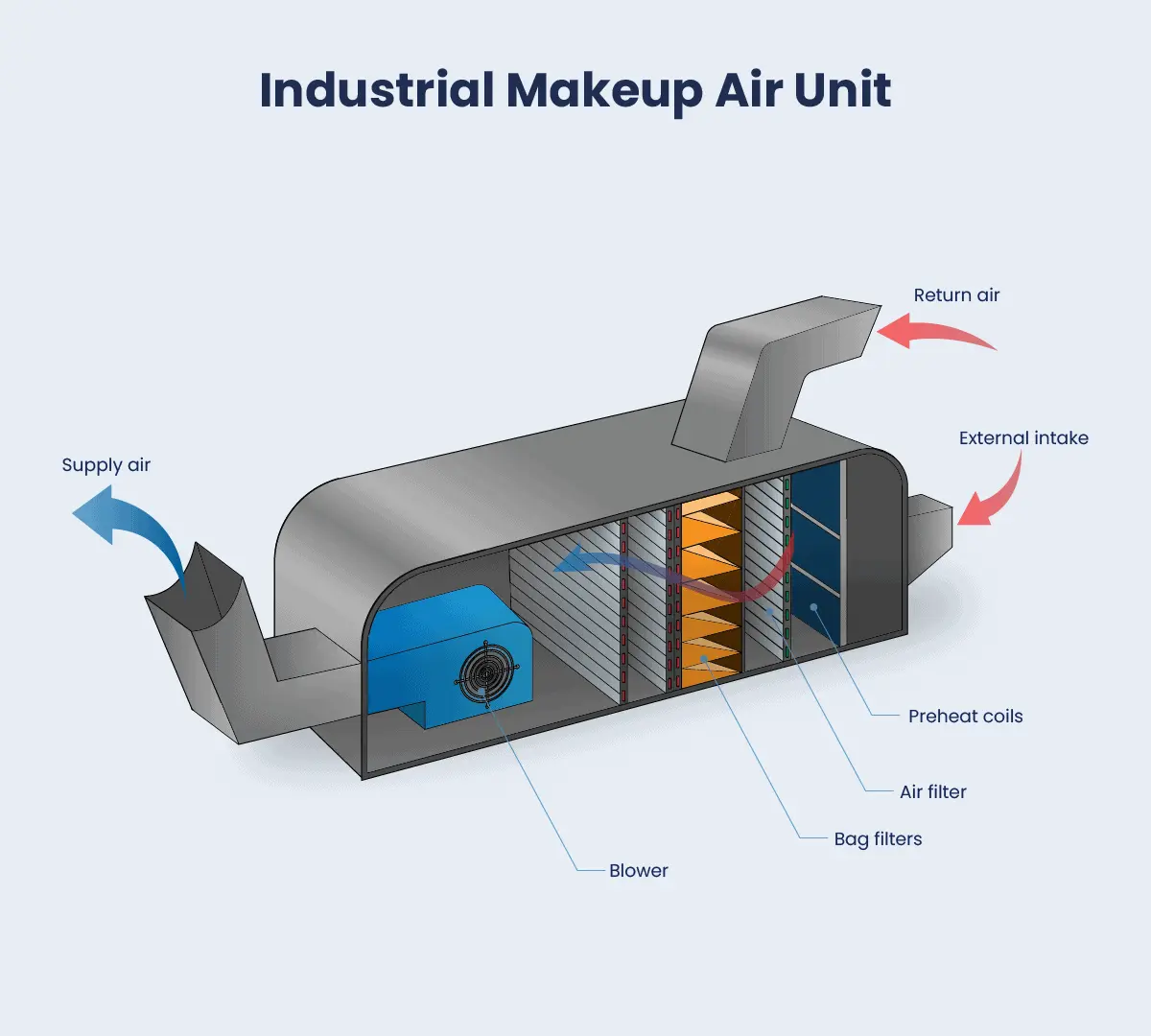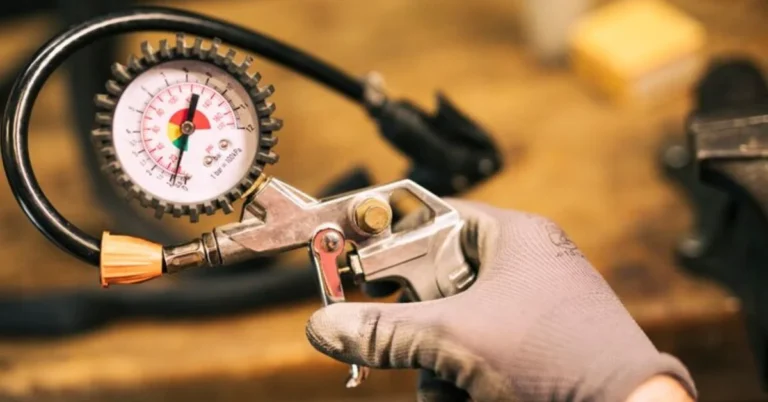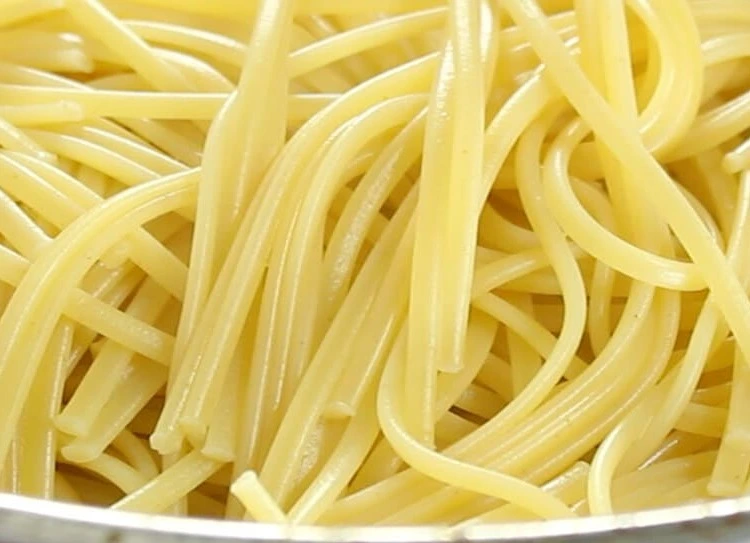Make-Up Air: A Comprehensive Guide to Building Ventilation

In building ventilation, make-up air (MAU) systems play a key role in maintaining indoor air quality and preventing the negative effects of pressure imbalances. As modern buildings become more energy-efficient and tightly sealed, balanced air intake and exhaust systems have become even more critical. This guide explores make-up air, its applications, benefits, and why it’s essential for maintaining comfort and safety in residential, commercial, and industrial spaces.
What Is Make-Up Air?
Make-up air refers to the fresh outdoor air introduced into a building to replace the air removed by ventilation systems, range hoods, or other exhaust devices. Typically, this air is conditioned—heated or cooled—before entering the building, ensuring comfort and energy efficiency.
Why Is Make-Up Air Important?
Without make-up air, buildings can develop negative pressure, leading to numerous issues like poor indoor air quality, back-drafting of combustion appliances (increasing carbon monoxide risks), and higher energy consumption. In tightly sealed buildings, these problems are amplified because the natural infiltration of air is reduced, limiting the replacement of the exhausted air.
Make-up air systems prevent these issues by introducing controlled outdoor air to balance the amount expelled. They maintain a healthy, safe environment by ensuring the building remains pressurized and comfortable.
The Role of Make-Up Air in Ventilation Systems
Ventilation systems remove stale, contaminated, or humid air from indoor environments. As air exits, fresh air needs to replace it to maintain balance. This is where make-up air comes into play, ensuring ventilation systems operate efficiently without creating pressure imbalances.
Preventing Negative Pressure
Negative pressure happens when buildings exhaust more air than they bring in. In homes, this can occur when range hoods or bathroom fans run without compensating for the lost air. In commercial kitchens or industrial settings where exhaust systems operate constantly, the problem escalates.
Negative pressure leads to several issues:
- Back-drafting: Appliances such as water heaters and furnaces may reverse airflow, pulling harmful exhaust gases like carbon monoxide back into the building.
- Energy inefficiency: Buildings without make-up air struggle to maintain temperature, which increases energy consumption.
- Comfort problems: Negative pressure creates drafts and temperature fluctuations, making environments uncomfortable.
Benefits of Maintaining Proper Air Pressure
Make-up air systems maintain balanced pressure and offer multiple benefits:
- Improved indoor air quality: Fresh, filtered outdoor air replaces stale indoor air.
- Increased safety: Proper airflow prevents back-drafting of dangerous gases.
- Energy savings: Heat recovery systems condition incoming air, lowering heating and cooling costs.
Applications of Make-Up Air Systems
Make-up air systems benefit various settings, from homes to large commercial and industrial spaces. Here’s how different environments use them:
Residential Use: Kitchen Range Hoods and Bathroom Fans
In homes, make-up air systems are crucial in kitchens and bathrooms, where range hoods and fans exhaust large volumes of air. Without make-up air, negative pressure can lead to discomfort, poor air quality, and safety risks. Installing a make-up a,ir system ensures these spaces remain balanced and comfortable.
Commercial Kitchens: Balancing High Exhaust Rates
In commercial kitchens, exhaust hoods constantly remove air filled with smoke, grease, and odors. Without make-up air, kitchens can become pressure traps, making doors harder to open and affecting appliance performance. Make-up air systems replace the exhausted air, ensuring a safe and efficient working environment.
Hospitals and Laboratories: Ensuring Clean Air
In healthcare and laboratory settings, proper air quality is vital for infection control and safety. Hospitals and laboratories use make-up air systems to maintain clean air by expelling contaminants and introducing fresh air. These systems are critical in spaces where hazardous materials are handled or patients with compromised immune systems receive treatment.
Industrial Facilities: Managing Hazardous Fumes
In industrial environments, make-up a,ir systems help control the expulsion of hazardous gases, dust, and fumes. Factories, warehouses, and plants rely on these systems to replace the exhausted air with clean, conditioned air, maintaining a safe workspace and preventing negative pressure.

Key Features of Make-Up Air Units
Modern make-up air units come equipped with features that enhance their performance and efficiency. These systems can be customize to meet the specific needs of a building.
Customizable Airflow
One of the standout features of make-up air units is their ability to adjust airflow. Systems can be configure to supply air at different speeds, temperatures, and humidity levels, depending on the building’s requirements.
Energy Efficiency and Heat Recovery
Many make-up air systems incorporate energy-saving features like heat recovery. Heat wheels capture heat from outgoing exhaust air and transfer it to incoming fresh air, reducing the energy required to condition new air. This leads to significant long-term energy savings.
Regular Maintenance for Optimal Performance
To keep make-up air systems functioning efficiently, regular maintenance is essential. This includes cleaning filters, checking airflow, and ensuring heating and cooling elements operate properly. Routine maintenance extends the system’s lifespan and ensures it continues providing energy-efficient, safe air replacement.
Read Also: Enhanced Travel Experiences: Leveraging Travel Tweaks to Transform Agency Offerings
Pros and Cons of Make-Up Air Systems
Pros:
- Health benefits: Introducing fresh outdoor air improves indoor air quality and reduces health risks like respiratory issues.
- Energy efficiency: Heat recovery in make-up air systems reduces energy costs, making them an eco-friendly option.
- Safety: These systems prevent back-drafting of dangerous gases, ensuring occupant safety.
- Comfort: Maintaining proper air balance eliminates drafts and temperature fluctuations.
Cons:
- Initial costs: Installation can be expensive, especially when retrofitting older buildings.
- Maintenance needs: Regular upkeep is necessary to ensure optimal system performance.
Common Misconceptions About Make-Up Air Systems
Myth 1: Turning Off Make-Up Air Systems Saves Energy
Turning off the make-up air system might seem like a good way to save energy, but it actually increases energy costs. When make-up air is disable, the building develops negative pressure, leading to drafts and unconditioned air leaks. These leaks require more energy to regulate, ultimately raising energy bills.
Myth 2: Make-Up Air Systems Are Only Necessary for Large Buildings
While large buildings often require robust make-up air systems, smaller residential spaces benefit from them as well. Any area where air is exhausted—whether through a range hood, fan, or other ventilation systems—needs fresh air intake to maintain proper balance.
Conclusion: The Long-Term Value of Make-Up Air Systems
In today’s buildings, where energy efficiency and air quality are top priorities, make up air systems provide an essential solution for maintaining balanced airflow. While the initial installation costs might be high, the long-term benefits in terms of air quality, energy savings, and safety make them a valuable investment.
Make-up air systems ensure that exhausted air is replaced with clean, conditioned air, creating healthier, safer, and more comfortable indoor environments.
FAQs About Make-Up Air Systems
1. What happens if I don’t have a make-up air system?
Buildings without a make-up air system may experience negative pressure, leading to poor air quality, higher energy costs, and safety risks like back-drafting.
2. Can make-up air systems be installed in existing buildings?
Yes, you can retrofit make-up air systems into existing buildings, though the installation may cost more compared to new construction.
3. How do make-up air systems improve indoor air quality?
They introduce fresh outdoor air, reducing pollutants and contaminants that accumulate indoors.
4. Is make-up air necessary for residential kitchens?
Yes, kitchens with powerful range hoods need make-up air to replace the large volume of air being exhausted, ensuring proper ventilation and preventing negative pressure.
5. How often should a make-up air system be maintained?
Maintenance should occur at least once a year to ensure the system remains efficient and safe.





